A Bridge Too Far — 4K
Joseph E. Levine’s multi-star WWII epic is one of the last Road Show blockbusters: Robert Redford, Sean Connery, Michael Caine, Dirk Bogarde, James Caan, Elliott Gould, Gene Hackman, Anthony Hopkins, Hardy Kruger, Ryan O’Neal, Laurence Olivier, Maximilian Schell and Liv Ullmann carry substantial roles in a detailed re-enactment of an ill-fated Allied attempt to break into Germany through Holland. Richard Attenborough directs from William Goldman’s script; the 3-hour 4K package is loaded with extras.

A Bridge Too Far
4K Ultra HD + Blu-ray
Via Vision [Imprint]
1977 / Color / 2:35 widescreen / 176 min. / Street Date December 13, 2024 / Available from [Imprint] / au 129.95
Starring: Dirk Bogarde, James Caan, Michael Caine, Sean Connery, Edward Fox, Elliott Gould, Gene Hackman, Anthony Hopkins, Hardy Kruger, Ryan O’Neal, Laurence Olivier, Robert Redford, Maximilian Schell, Liv Ullmann, Wolfgang Preiss, Hans Von Borsody, Frank Grimes, Jeremy Kemp, Alun Armstrong, Ben Cross, Denholm Elliott, John Ratzenberger.
Cinematography: Geoffrey Unsworth
Production Designer: Terence Marsh
Art Directors: Stuart Craig, Roy Stannard, Alan Tomkins
Costume Design: Antony Mendleson
Film Editor: Antony Gibbs
Optical Effects: Wally Veevers
Special Effects: John Richardson
Second Unit Director: Sidney Hayers
Original Music: John Addison
Screenplay Written by William Goldman from the book by Cornelius Ryan
Produced by Joseph E. Levine, Richard P. Levine
Directed by Richard Attenborough
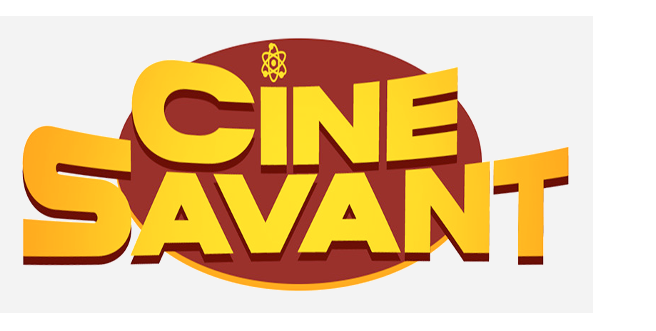 Once upon a time, ‘The Movies’ offered special limited run engagements called Road Shows. Some ran three hours, split into two parts separated by an intermission. For us kids of the ’50s and’60s, the Road Show format was a big deal. Many engagements had reserved seats. Not living in a big city, this reviewer only saw such movies on school trips, riding a bus into Los Angeles: How the West Was Won, Camelot. Pictures like It’s a Mad Mad Mad Mad World and Grand Prix could play for a year or more in one theater, and still fill up for evening shows.
Once upon a time, ‘The Movies’ offered special limited run engagements called Road Shows. Some ran three hours, split into two parts separated by an intermission. For us kids of the ’50s and’60s, the Road Show format was a big deal. Many engagements had reserved seats. Not living in a big city, this reviewer only saw such movies on school trips, riding a bus into Los Angeles: How the West Was Won, Camelot. Pictures like It’s a Mad Mad Mad Mad World and Grand Prix could play for a year or more in one theater, and still fill up for evening shows.
By the middle 1970s the Road Show movie was all but dead, supposedly killed off by expensive flop musicals, but really because stories not suitable for Road Show exhibition were turning off audiences: Krakatoa East of Java, The Charge of the Light Brigade. The Salkinds broke up their epic pictures into two films with separate releases: The Three Musketeers, Superman: The Movie. Into this Incredible Shrinking Epic situation came one of the biggest independent moguls of them all, Joseph E. Levine. His first fortune was made executive producing the importation of the Japanese Godzilla. He then really cleaned up bringing in the Italian Hercules all on his own. A master of promotions, Levine made a big deal out of Carroll Baker The Carpetbaggers and Harlow. He earned his wheeler-dealer cred by sidestepping the major financial disaster of his own The Last Days of Sodom and Gomorrah.
Topped only by Italy’s Dino de Laurentiis, Joseph E. Levine was one of the last of the independent moguls. His last major picture was an undertaking too big for most studios, a giant epic with a long cast of A-List stars. The most recent comparable show was Fox’s The Towering Inferno, which signed both Steve McQueen and Paul Newman. They cost millions for a few days’ work, but the trade-off was instant bankability.
Joe Levine had genuine moviemaking Moxie. To tell the big story of one of World War II’s most complicated battles, A Bridge Too Far signed up a squad of top stars, the kind that normally didn’t play in ensemble pictures: Michael Caine, Sean Connery, Gene Hackman, Anthony Hopkins, Ryan O’Neal — and the demanding Robert Redford. Levine could do this because, as a wildcat independent, he could pre-sell the movie to various territories, collecting cash and promissory notes up front. It’s always said that A Bridge Too Far was in the black even before cameras rolled … although most of the moolah was just on paper. If the show wasn’t a hit, Levine would still be sunk.
The finished A Bridge Too Far was almost a Road Show presentation … initial runs did use 70mm prints. But it soon became a normal release without an intermission, proving a test of audience bladder control. As a production it had to conjure giant armies and stage battles full-scale, long before Computer Generated Imagery could generate spectacle by pushbutton. Levine’s experts found dozens of appropriate planes, tanks and cannon, and found ways to recreate 1944 Holland in 1976. To direct, Levine signed Richard Attenborough, with the promise of producing Attenborough’s pet pacifist epic, Gandhi. The celebrated screenwriter William Goldman took on the task of turning the sprawling, amorphous military campaign described by Cornelius Ryan into a coherent and entertaining movie. Goldman wrote about his ordeal in his popular book Adventures in the Screen Trade.
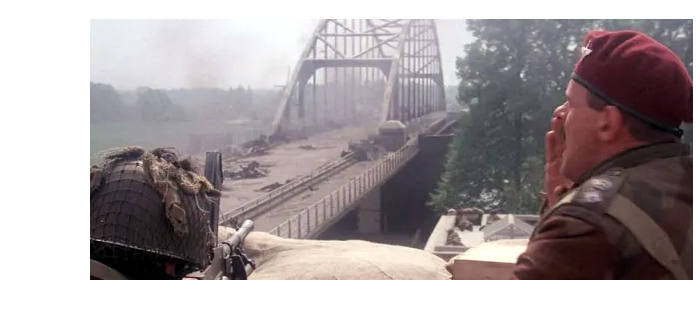
In September of 1944, barely three months post- D-Day and only a few weeks after the liberation of Paris, England’s General Montgomery slammed through an enormous Allied battle plan called Market Garden that ‘will end the war in a couple of months’ … i.e., wrest military glory back from the Americans. With only a few days notice, General Browning (Dirk Bogarde) and General Horrocks (Edward Fox) presided over a wild plan to smash through mostly undefended Holland, and invade Germany through a Northern ‘back door.’ The plan required coordination on a scale never before attempted. Mass paratroop drops aimed to seize a series of bridges between the Belgian border and Arnhem, a space of only 70 miles. Commanders Urquhart (Sean Connery), Gavin (Ryan O’Neal), Sosabowski (Gene Hackman), and Frost (Anthony Hopkins) each find their bridges difficult to take. Drop zones are too far away, communication breaks down and a lot of vehicles are lost.
The Germans are caught off guard, yet mount a solid defense. ‘Undefended’ Holland happens to be occupied by an entire armored unit on leave, and an alert SS division, commanded by General Ludwig (Hardy Kruger). Ludwig and General Bittrich (Maximillian Schell) immediately move to defend two of the key bridges. Where no resistance was expected, major battles take place.
General Horrocks keeps morale high by calling his armored division ‘the cavalry.’ Lt. Colonel Vandeleur (Michael Caine) spearheads the tank column up the one single-lane highway. They’re expected to cross at least 5 rivers, pass through Eindhoven and Nijmegen, and reach Arnhem in 48 hours. The mass paratroop drop (and glider invasion) go reasonably well, but the ‘tank cavalry charge’ is slowed to a crawl by opposition troops ‘that weren’t supposed to be there.’ With only a couple of bridges taken and most of the paratroops cut off, the daring campaign slows down. Amazing feats of military determination are recorded. Col. Stout (Elliott Gould) must rush to erect a provisional bridge, to replace one dynamited by the Germans. Major Cook (Robert Redford) must take his troops across a river on little cloth boats, a near suicidal mission. In Arnhem, Colonel Frost’s forward strike force is caught in a bloody stalemate at the last bridge, with German resistance growing stronger by the hour. The planned three-day dash becomes a nine-day ordeal.
The sidebar stories are no more reassuring. Before the launch of the mission, General Browning dismisses and ignores photographic evidence brought forward by his intelligence officer Major Fuller (Frank Grimes), that proves that the road to Arnhem is defended so strongly. Operation Market Garden should be called off, but Browning chooses to suppress Fuller’s intel, and have him remanded to sick bay so as not to rock the boat.
Dutch civilians are overjoyed at the sight of English troops, assuming that they are being liberated. As their beautiful town becomes a battlefield, Doctor and Mrs. Ter Horst (Tom van Beek & Liv Ullmann) volunteer their home to serve as a provisional triage clinic. The storyline also pauses to relate real-life sidebar stories from the battle. A noted oddity about a ‘battle chicken’ (a pet) is dispensed with fairly quickly. But an extended sequence that ends in a field hospital is a real standout. American paratrooper Sgt. Dohun (James Caan) brings a wounded comrade to a field hospital. A medic (Arthur Hill) pronounces the man dead, but Dohun forces him to re-evaluate on the body — at gunpoint.
A Bridge Too Far probably doesn’t make the mark as great film art. At least 80% of the picture is elaborate second unit work, all high in production value, reasonably realistic and frequently gory. Aiming to be a crowd-pleasing blockbuster, the show’s music score says ‘grand military escapade,’ often ignoring the parade of tragic calamities. But Attenborough is great with his actors, most of whom overcome the stigma of being movie stars in cameo roles. No matter how bad the odds, we subconsciously wonder why Sean Connery’s paratroop commander doesn’t lead his men to success.
We also don’t get to see very many of the stars interact. Most are separated from each other, and Robert Redford and James Caan perform in self-contained episodes. William Goldman does yeoman’s work keeping at least 8 story threads aligned, making Market Garden resemble a conventional battle saga. But the campaign doesn’t lead to a climactic clash that settles accounts. In terms of pacing, A Bridge Too Far would seem better told in a non-Road Show running time. A feeling of shapelessness comes into play.
When the onslaught stalls, considerable tim is spent in the improvised Dutch hospital, which fills up with so many wounded that they are crowding a large lawn. The movie wanted an epic scope, and it also needed a substantial part to justify Liv Ullmann’s presence. She comforts dying soldiers. The finale shows her Kate Ter Horst exiting like refugees, pulling a hand cart with Laurence Olivier. The finish resembles both John Wayne’s The Alamo and Norman Jewison’s Fiddler on the Roof.
The commercial risk of A Bridge too Far is that it doesn’t deliver what escapist war fans want — some kind of positive finish. Making movies that tell the truth about warfare is a good thing, but the mass audience doesn’t like them, as can be seen in two excellent movies about major defeats: Tora! Tora! Tora! and Zulu Dawn we’re box office turnoffs. Market Garden was an ignominious defeat, one of the biggest strategic blunders of the war. If it is not well known, it’s because everyone concerned probably wanted to forget it as soon as possible. There’s no glorious victory celebration to justify all the hard work, sacrifice and killing — the massive push by so many valiant men just peters out in failure. Many are killed, many captured, and the rest have to crawl away.
Only when the battle winds down does the movie seem to drop the ball. Unlike Pearl Harbor or Wake Island, most viewers don’t know going in that A Bridge Too Far is going to be a horrible defeat. After 170 minutes of agonizing sacrifice, four glum commanders declare a failure and pull the plug. One of them says that they’re only a half-mile from the final objective, that success might be just an one big push away. But then Ryan O’Neal sighs ‘Oh well, it was a nice try.’
The movie never spells out why the Allies give up. We’ve seen it at least four times, and are convinced that it doesn’t communicate exactly what went wrong. We half-baked armchair commandeers and history buffs think in emotional terms. We are willing to believe that the Allies just didn’t have what was needed to continue, but the movie doesn’t make that clear.
We’ve just sat through 170 minutes of exciting combat blanketed with positive patriotic music by John Addison. In real life, the defeat must have been all too obvious, but in the film our final reaction is puzzled frustration.
By slowing up the Allied advance, Market Garden added months to the war. Germany regrouped with the Battle of the Bulge. Hindsight wisdom is not a good thing, but the war could have ended a lot differently. Concentration camps could have been liberated much earlier. Anne Frank lost her life in Bergen-Belsen in February or March of 1945 ; Berlin fell in April to the Russians — not us.
Market Garden was the strategy insisted upon by Field Marshal Montgomery, but he does not appear in the movie and is only mentioned a couple of times. Franklin J. Schaffner’s epic success Patton presented Montgomery as a preening eogist who placed his personal pride and glory ahead of everything. When the battle was lost, Montgomery insisted that the ignominious defeat was ‘90% successful,’ and blamed everyone else for his unwieldy, far too optimistic plan. The American movie Patton could present Montgomery as a problem, but A Bridge Too Far is English. Had it placed blame for everything on the honored Field Marshal, the protests would never have ended.
The dissent was directed elsewhere. With Montgomery absent, the movie makes it look like the ‘villains’ are Browning and Horrocks. Dirk Bogarde’s Browning ignores evidence that success is hopeless; Edward Fox’s Horrocks is presented as a jingoistic ghoul cheerfully sending his troops off with elitist jokes and ‘jolly good’ smirks. Fox plays his part beautifully – Horrocks is not a satiric distortion, yet he would be a perfect fit for Attenborough’s caustic anti-war musical Oh, What a Lovely War!
In an action movie this big, the action set-pieces must have been turned over to second-unit directors, stunt arrangers and special effects extras. Several fights are as realistic as war movies get. None of the artillery barrages and other battle action is short-changed. If anything, it’s all too drawn-out — the dramatics might have been more effective if sequences were shortened and the pace picked up.
Director Attenborough does excellent work with his stars, however. Nobody ‘phones it in’ like Marlon Brando. Salary disputes aside, Sean Connery and Robert Redford give very committed performances. Add Anthony Hopkins to their ranks, and the film has three fine portraits of soldiers doing their very best in impossible circumstances. Instead of predicting defeat, William Goldman’s morbid dialogue makes us admire the warriors all the more. Robert Redford’s ‘cooperative’ Major Cook keeps up a positive front in the face of unending setbacks. His move to cross a river is delayed so long that every enemy gun must be ready in waiting. When he’s finally told that he’ll have to cross the river under enemy fire in broad daylight, all Cook can do is express Gung-ho approval: “Better by daylight.” Unlike Montgomery, he’s subordinating himself to the imperative to succeed or die trying.
Connery and Anthony Hopkins’s commanders show superhuman resilience in near-hopeless situations. James Caan is also 100%, demonstrating a credible ‘Sgt. Rock’- style toughness. Elliott Gould is amusing and colorful as a cigar chomping engineer. Ryan O’Neal tries to be a hard-bitten tough guy, but too many of his line readings are just plain bad. Some also sound post-dubbed. Sweetening the deal are Laurence Olivier and Liv Ullmann as the Dutch nationals coping with the utter destruction of Arnhem and the mounting casualties. All the best German actors who ever played generals are here, speaking their proper language: Maximillian Schell, Hardy Kruger and Savant favorite Wolfgang Preiss.
Attenborough’s direction leans heavily on anti-War ironies. Too many scenes hit the same redundant note, that all the death and suffering is appallingly useless. In Liv Ullmann’s house, Attenborough’s camera picks out details of suffering among the wounded to make us reach for our hankies. Wounded soldiers on a hospital lawn play music and ‘linger’ photogenically. When a Dutch resistance fighter places his dead son’s body on a barricade, we’re given a trite telephoto focus-pull to the machine gun of an advancing German tank. All these episodes are true, but we resent the heavy handedness. The worst bit is an extended scene in which a brave soldier makes a dash for an airdrop cannister lying under the sights of German guns. He doesn’t make it, even though his buddies cheer him on. The situation seems absurd because Attenborough’s choice of angles makes it look as if the German guns should be able to cut down the cheering section as well. Also, the exact same scene was done better 15 year before, in Samuel Fuller’s Merrill’s Marauders.
Much better is a throwaway dialogue line from Sean Connery’s General Urquhart. His paratroops come across a group of escapees from an asylum, who hoot and holler at the Allied insurgents. Urquhart turns to his subordinate: “Think they know something we don’t? We’re told that an unbilled ‘lunatic wearing glasses’ is director Richard Attenborough.
Via Vision [Imprint’s] 4K Ultra HD + Blu-ray of A Bridge Too Far is billed as ‘a new Dolby Vision presentation on 4K UHD, restored from the original 35mm negative by Imprint Films.’ The second Blu-ray disc is billed as the new 4K restoration as well. The flawless encoding pulls a lot of extra detail out of the images. In 4K we can see all of the authentic combat hardware clearly. Wally Veever’s many matte shots (save for one green-tinted image early on) are excellent. The illusion of skies filled with invasion aircraft improves on 1969’s Battle of Britain.
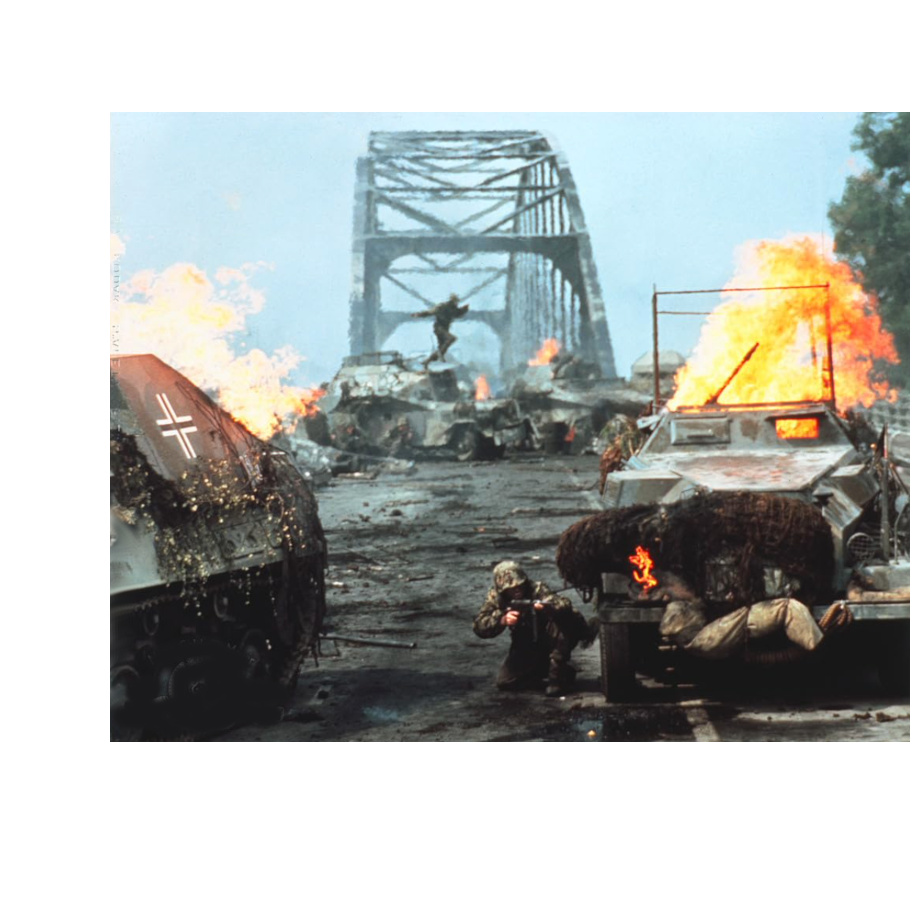
The fancy boxed set has enough extras to justify its price, including several full-length documentaries. [Imprint] has commissioned a group of new featurettes, and includes all of the fancy older extras. Several include interviews with Richard Attenborough, who passed away in 2014.
William Goldman’s commentary (with an assist from crew members and guest experts) is good, but we also recommend the Trivia Text Track feature, which came from the 2005 DVD. It’s like watching the movie with a military expert, who clarifies facts, offers insights and explains how one part of the campaign affects another. The info pops up just as it becomes relevant to the action on screen.
The text track also explains in detail when the movie deviates from history. As it turns out, some of the stranger occurrances are portrayed almost exactly as they did on the battlefield. The movie is more accurate than we thought.
A good English documentary on the film and the campaign is included from 1977. Not seen and seemingly lost is an hourlong United Artists documentary screened once on Network TV. I’m aware of it because a colleague, Richard A. Smith, edited it when working for UA publicity. We found and offered a print to MGM Home Video, that was not used. The show has a potentially controversial pitch All four of the key Market Garden generals were still alive in 1976, including the oft-blamed General Horrocks, and were invited to view the scene of the parachute drop. Here they are enjoying the re-creation thirty years later, drinking tea and chatting about the worst fiasco of the war as if it was a bad patch in a winning Rugby season. Battles like Market Garden are forever being re-fought in print; after nearly 50 more years of research, a lot more is likely known about the campaign’s failure.
Reviewed by Glenn Erickson

A Bridge Too Far
4K Ultra HD + Blu-ray rates:
Movie: Very Good
Video: Excellent
Sound: Excellent DTS-HD 5.1 Surround + DTS-HD 4.0 Surround
Supplements:
Discs One (4K UHD) and Two (Blu-ray)
Audio commentary by William Goldman plus crew members
Alternate Trivia Track subtitle track
Theatrical Trailer
Disc Three: (Blu-ray) Bonus Features
New featurettes:
Attenborough at War with C. Courtney Joyner
Joseph E. Levine: Becoming the Showman
New video interviews:
More Than Another War Movie with Elliott Gould
We Are the Calvary with camera operator Peter MacDonald
Behind the Lens: Remembering Geoffrey Unsworth with clapper loader Tony Jackson and camera operator Peter MacDonald
A Futile Mission with film music historian Jon Burlingame
New feature-length documentary:
Making ‘A Bridge Too Far — by Simon Lewis
Archival extras, Standard Definition:
1977 making-of documentary The Arnhem Report
1945 short subject Theirs is The Glory about the battle in Arnhem
2001 documentary Heroes from the Sky
60th Anniversary featurette A Distant Battle: Memories of Operation Market Garden
Archival video interviews:
With Richard Attenborough (2002)
With Richard Attenborough (1977)
With Anthony Hopkins (1977)
Photo Gallery
Insert booklet with a Cinema Retro essay by Simon Lewis, and a book excerpt from The Boys from the Bridge: The Story of Attenborough’s Private Army by Sebastian Abineri.
Deaf and Hearing-impaired Friendly? YES; Subtitles: English (feature only)
Packaging: One 4K Ultra HD + Blu-ray in Keep case
Reviewed: November 29, 2024
(7253far)
Visit CineSavant’s Main Column Page
Glenn Erickson answers most reader mail: cinesavant@gmail.com
Text © Copyright 2024 Glenn Erickson

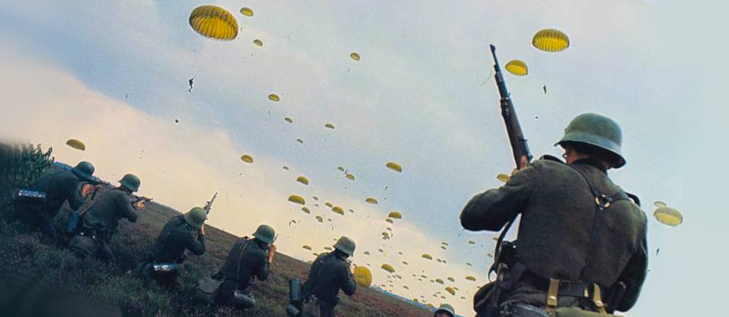

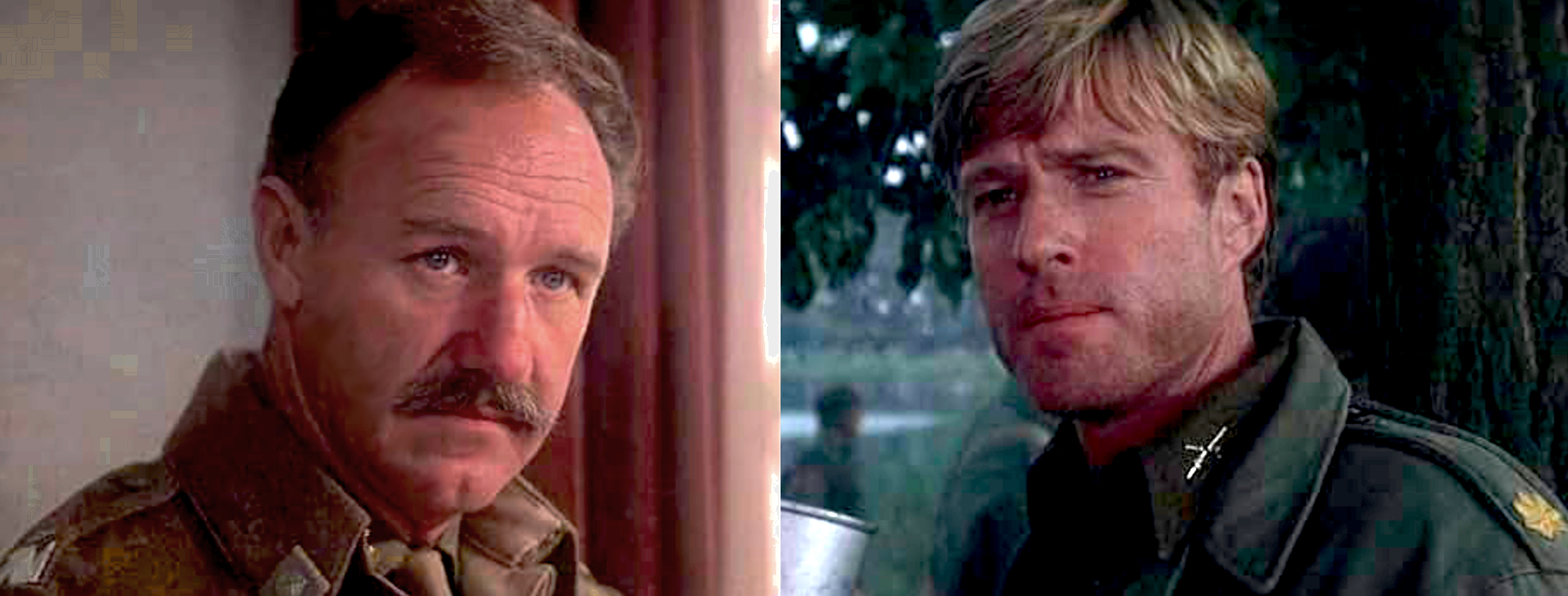




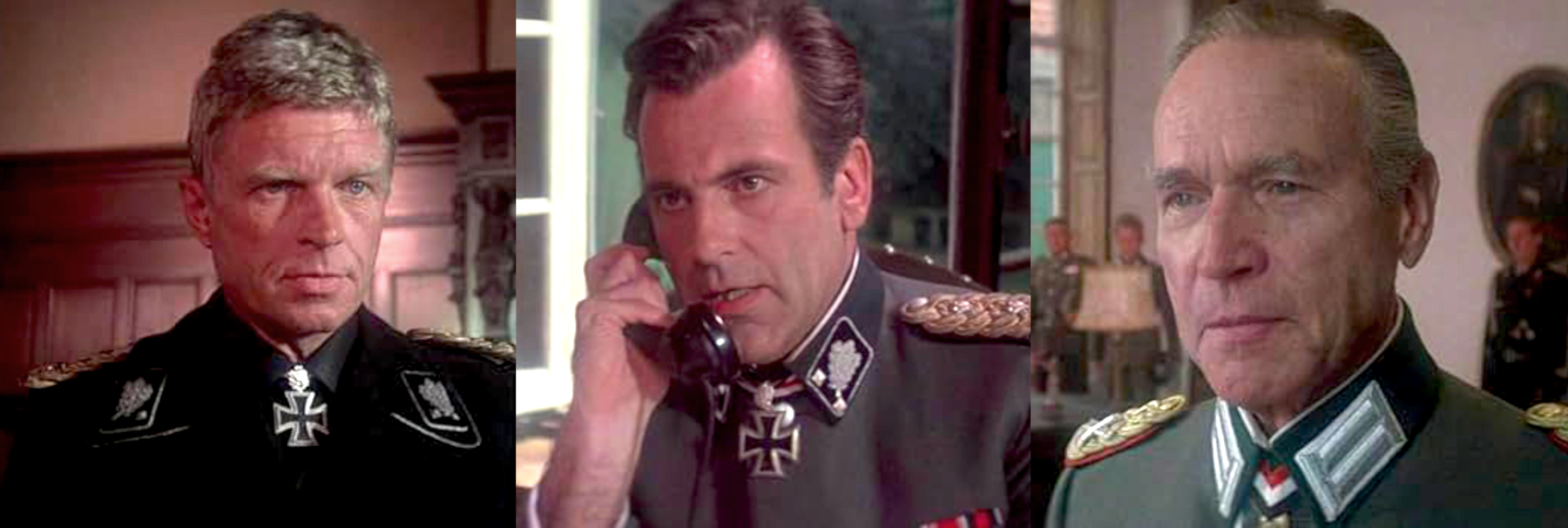
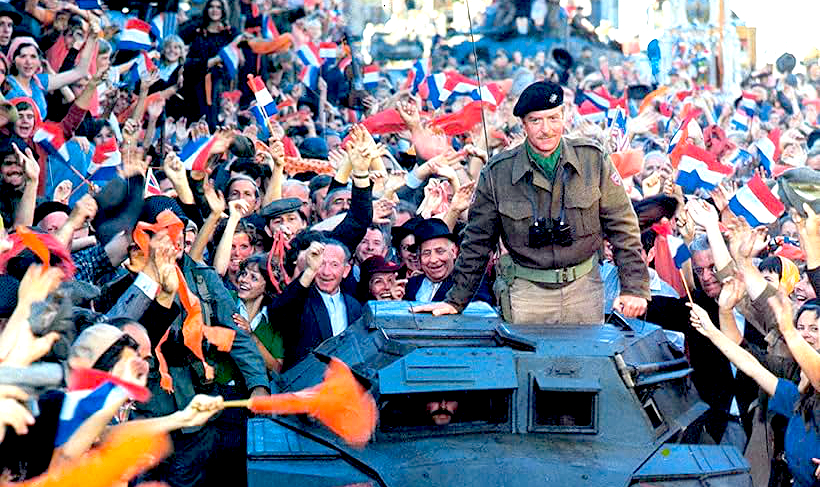


Too bad this release did not include the intermission. I believe the laserdisc is the only home edition that did.
Be great to see what the extra content is. Previously unseen footage, edit out for Cinema maybe?
Would be good to see it 4k, but to be honest I like the feel of the original format. It shows the quality of filming especialy for its time.
This film was watched many a time as a child, on weekends and holidays. I stopped watching it when I got a bit older, my mum used to cry some times. Turned out her cousin was killed in Arnhem and rests in Osterbeek Cemitary.